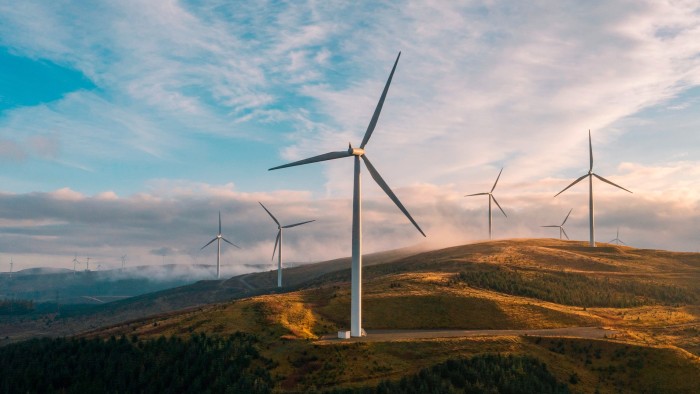At first glance, the results of last December’s COP28 summit promised to give a major boost to the world’s clean energy companies and their investors. Negotiators from around 200 countries have agreed to triple the world’s renewable power capacity and double efficiency improvements by 2030.
Achieving these goals will mean a surge in growth for companies developing and deploying technologies that reduce the world’s energy emissions.
However, this turnaround has proven slow to materialize. The iShares Global Clean Energy Exchange Traded Fund, which owns a broad basket of climate technology stocks, fell 6.5% in the 12 months to Nov. 4, compared with a 26% rise in the FTSE World Index.
The figures were also disappointing in the private market. Climate change technology startups raised a total of $11.3 billion in the first half of 2024, down one-fifth from the same period last year, according to an analysis by research firm Sightline Climate.
Part of the problem stems from macroeconomic factors. The industry came of age during the second decade of this century, a decade of unusually low interest rates even by historical standards.
Renewable energy projects are established to build wind and solar farms using debt financing, which is paid back over decades while earning cash from the electricity generated.
But when central banks started raising borrowing costs in 2022 to curb inflation, developers’ repayment bills skyrocketed, giving their business models a huge shock. They are still adjusting to that reality.
“This is the first time that large-scale renewable energy investments have faced interest rate hikes,” said Matthew Ridley, co-manager of Greencoat UK Wind, the UK’s largest listed green energy investment fund.
Rising interest rates have been a major factor in the slowdown in venture capital investment more broadly. But climate change technology ventures have also had to compete with a boom in artificial intelligence startups. According to data provider Crunchbase, 35% of all investments in U.S. startups went to AI companies in the first eight months of this year.
According to Sightline Climate, green tech funding from the U.S. venture capital industry has been further restricted by the U.S. presidential election.
When Donald Trump returns to the White House in January, he will be far less supportive of clean energy than the outgoing administration of President Joe Biden.
Nevertheless, some investors remain bullish, largely because of the Anti-Inflation Act, which Biden provided with an estimated $369 billion in tax credits for clean energy investments. be.
The bill will have a “huge” impact and send long-term positive signals to entrepreneurs and investors, said the investment committee at Breakthrough Energy Ventures, the company founded by software mogul Bill Gates. said Carmichael Roberts, co-director of the association. The world’s largest green venture fund.
But the rise of environmentalism has added further obstacles. The United States and the European Union have imposed steep tariffs on cleantech imports from China, citing concerns about allegedly unfair subsidies from the Chinese government and China’s control over green energy supply chains.
But critics warn these levies will drive up the cost of low-carbon technologies in the US and EU and slow the energy transition around the world. But the tariffs have emboldened some U.S. and European companies that have direct competitors in China. For example, the stock price of US solar panel maker First Solar has increased more than 150% since the start of 2022.
Globally, the numbers paint a mixed picture. The International Energy Agency predicts that global investment this year will increase by about 6 percent from 2023 to $2 trillion, roughly double the amount invested in fossil fuels in 2024.
However, a 2:1 ratio of investment in clean energy and fossil fuels will reduce emissions and meet the goals set by the 2015 Paris Agreement of keeping the rise in global surface temperatures below 2 degrees Celsius. This is far from the amount needed. Ideally, the temperature is 1.5 degrees above pre-industrial levels.
Meanwhile, the world’s largest banks continue to provide more loans to fossil fuel customers than to renewable energy projects, according to research by the Sierra Club and other nonprofit groups.
The funding gap is likely to be most acute in developing countries, where the majority of the world’s population and future needs are concentrated. The IEA estimates that investment will need to double by 2030 to meet COP28 targets, but quadrupled in emerging markets outside of China.
Start-ups face a funding gap at a stage when they need tens to hundreds of millions of dollars to build the first practical plants based on low-carbon innovations. Some companies have been successful in attracting such funding, including Sweden-based H2 Greensteel, which received $5.2 billion from an international group this year to build the world’s first large-scale plant to use hydrogen to process iron ore. Procured.
But investors will need a strong stomach and a long-term view, cautions venture capital billionaire John Doerr.
“Building a climate-smart company will take five to 10 years compared to established incumbents, companies that have not addressed regulatory approvals, market risks, and technology risks. ” he says. “But I support it, and more importantly than me, entrepreneurs support it.”


